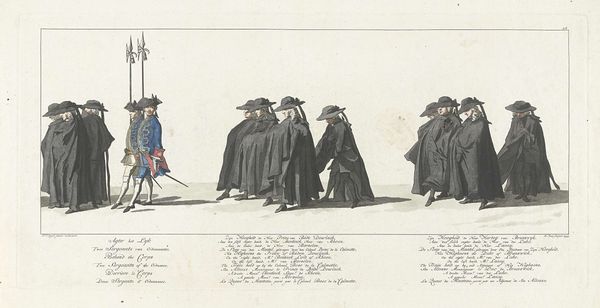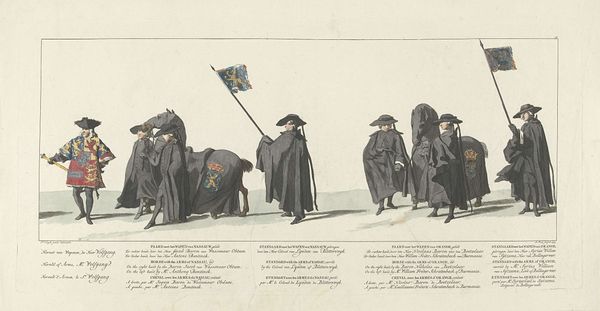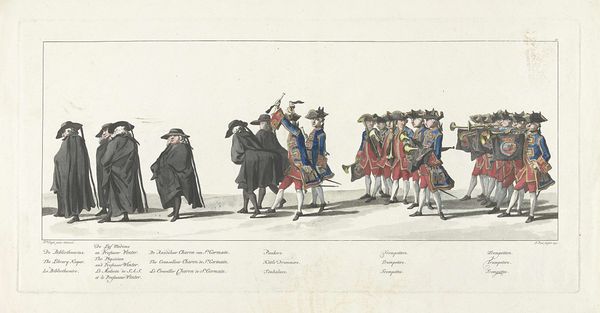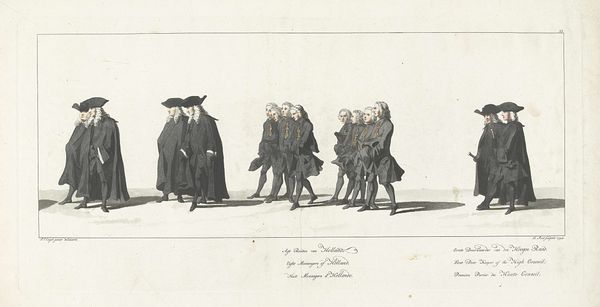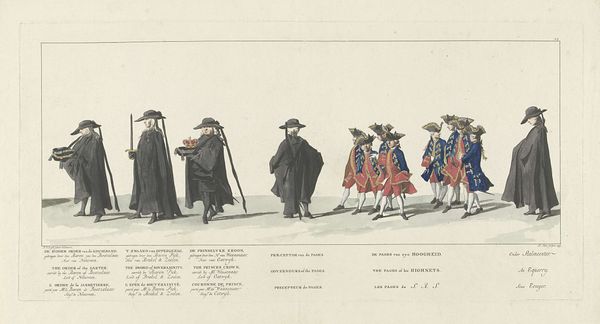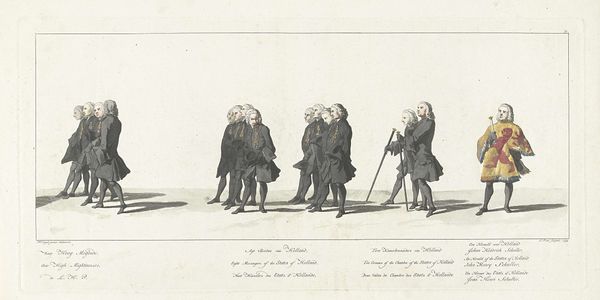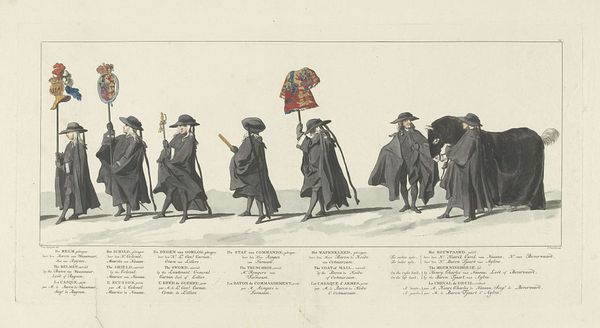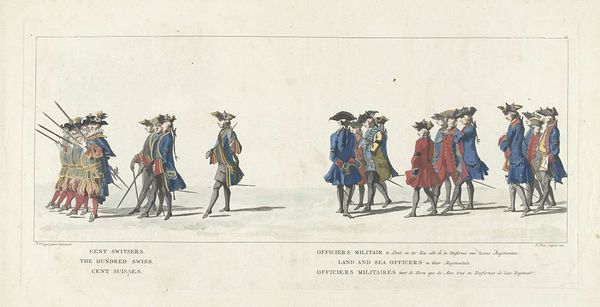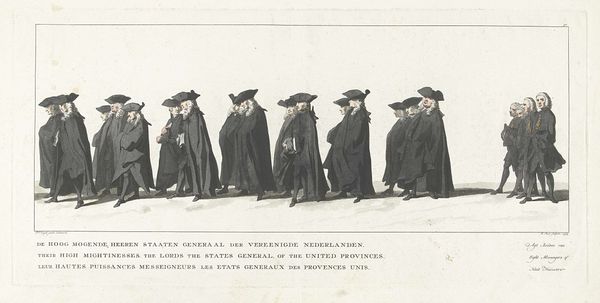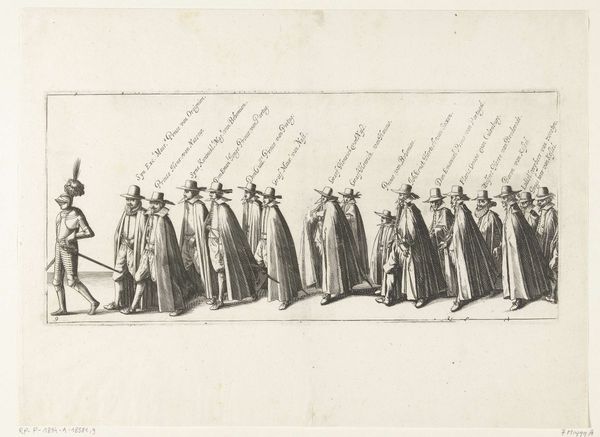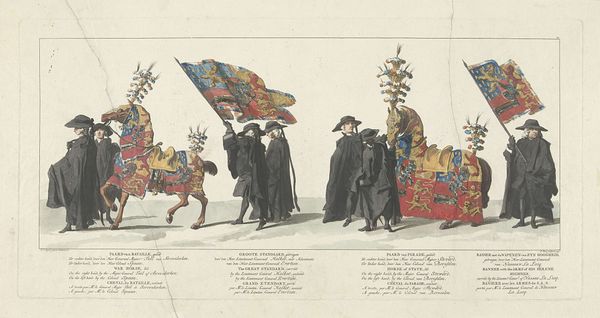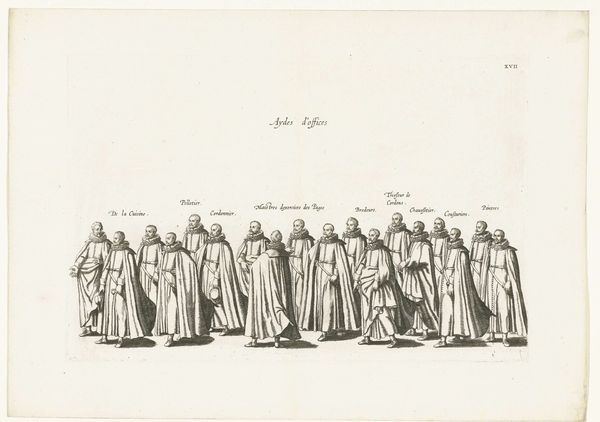
drawing, print, engraving
#
portrait
#
drawing
#
baroque
# print
#
history-painting
#
engraving
Dimensions: height 270 mm, width 560 mm
Copyright: Rijks Museum: Open Domain
Editor: This engraving by Jan Punt from 1753, titled *Lijkstatie van Willem IV, 1752, plaat 22,* depicts what seems to be a somber procession. I’m immediately struck by the repetition of figures in dark robes and the various coats of arms on display. How would you interpret the cultural context of this piece? Curator: This print documents the funeral procession of William IV, Prince of Orange, who died unexpectedly in 1751. Looking at this as a historical document, consider what a public display like this communicates. The rigid formation and elaborate symbols are less about personal mourning and more about projecting power and legitimacy. Editor: Power even in death? Curator: Exactly. Funerals, especially for leaders, are carefully staged events. The coats of arms, the individuals holding standards - these reinforce the prince’s lineage and authority. This wasn’t simply a private grieving event, but a statement meant for public consumption, both domestically and internationally. Consider also the medium – engraving allowed for mass distribution of this image, thereby amplifying the political message embedded within the funeral itself. How do you think this image might have been received by different audiences at the time? Editor: I hadn’t thought about the mass distribution aspect! Maybe different factions within the Netherlands would have read it differently? Some feeling affirmed in their loyalty, others perhaps seeing it as a reminder of a power structure they resented. Curator: Precisely. It serves as a fascinating reminder that art isn’t just about aesthetics; it’s often deeply intertwined with socio-political forces. We see here the politics of imagery very much at play. Editor: It's amazing how a single image can reveal so much about power and social dynamics of the time. Curator: And remember, even its presence in a museum today contributes to its ongoing social life!
Comments
No comments
Be the first to comment and join the conversation on the ultimate creative platform.
